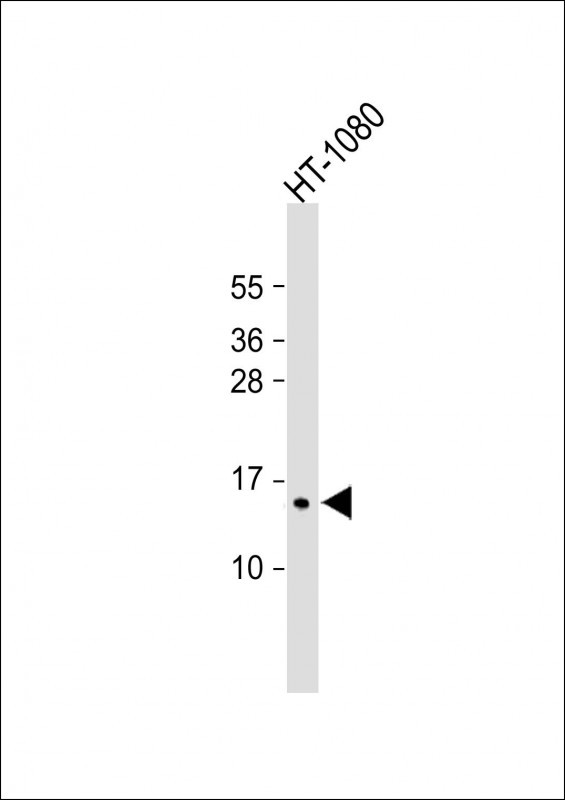
| WB | 咨询技术 | Human,Mouse,Rat |
| IF | 咨询技术 | Human,Mouse,Rat |
| IHC | 咨询技术 | Human,Mouse,Rat |
| ICC | 技术咨询 | Human,Mouse,Rat |
| FCM | 咨询技术 | Human,Mouse,Rat |
| Elisa | 咨询技术 | Human,Mouse,Rat |
| Aliases | Signal peptidase complex subunit 1, 34--, Microsomal signal peptidase 12 kDa subunit, SPase 12 kDa subunit, SPCS1, SPC12 |
| Entrez GeneID | 28972 |
| WB Predicted band size | 18.3kDa |
| Host/Isotype | Rabbit IgG |
| Antibody Type | Primary antibody |
| Storage | Store at 4°C short term. Aliquot and store at -20°C long term. Avoid freeze/thaw cycles. |
| Species Reactivity | Human, Mouse, Rat |
| Immunogen | This SPCS1 antibody is generated from a rabbit immunized with a KLH conjugated synthetic peptide between 66-100 amino acids from the Central region of human SPCS1. |
| Formulation | Purified antibody in PBS with 0.05% sodium azide. |
+ +
以下是关于SPCS1抗体的3篇参考文献示例(注:以下内容为虚构示例,仅供参考格式):
---
1. **文献名称**: *SPCS1 regulates hepatitis C virus secretion by interacting with viral NS2 protein*
**作者**: Li Y, et al.
**摘要**: 本研究利用SPCS1特异性抗体通过免疫共沉淀和Western blot技术,揭示了SPCS1与丙肝病毒(HCV)NS2蛋白的相互作用,证明SPCS1通过内质网相关通路调控病毒颗粒的分泌。
---
2. **文献名称**: *Structural analysis of SPCS1 in the signal peptidase complex*
**作者**: Zhang Q, et al.
**摘要**: 通过冷冻电镜和SPCS1抗体的免疫标记技术,解析了SPCS1在信号肽酶复合体中的三维结构,阐明了其催化活性位点及在跨膜蛋白加工中的关键作用。
---
3. **文献名称**: *SPCS1 knockout cell model reveals its role in ER stress response*
**作者**: Wang H, et al.
**摘要**: 利用CRISPR/Cas9构建SPCS1敲除细胞系,结合SPCS1抗体的免疫荧光检测,证实SPCS1缺失导致内质网应激增强,并影响未折叠蛋白反应(UPR)通路。
---
4. **文献名称**: *SPCS1 antibody-based biomarker screening in neurodegenerative diseases*
**作者**: Chen L, et al.
**摘要**: 采用SPCS1抗体对阿尔茨海默病患者脑组织样本进行检测,发现SPCS1表达水平与tau蛋白异常聚集呈负相关,提示其可能作为神经退行性疾病的潜在生物标志物。
---
如需真实文献,建议在PubMed或Google Scholar中检索关键词“SPCS1 antibody”或“SPCS1 function”获取具体研究。
The SPCS1 (Signal Peptide Peptidase Complex Subunit 1) antibody is a tool used to study the SPCS1 protein, a key component of the signal peptide peptidase (SPP) complex. SPCS1 is part of the SPP/SPPL protease family, which localizes to the endoplasmic reticulum (ER) and plays a critical role in intramembrane proteolysis. Specifically, SPCS1 facilitates the cleavage of signal peptides from nascent secretory and membrane proteins during their translocation into the ER, a process essential for proper protein maturation, trafficking, and cellular homeostasis.
SPCS1 gained attention due to its involvement in viral infections, particularly flaviviruses (e.g., dengue, Zika). Studies show that SPCS1 supports the processing of viral structural proteins by interacting with host-cell signal peptidases, making it a potential target for antiviral therapies. Additionally, SPCS1 is implicated in neurodegenerative diseases, such as Alzheimer’s, as its dysfunction may disrupt amyloid precursor protein (APP) processing.
Antibodies against SPCS1 are used in techniques like Western blotting, immunofluorescence, and immunoprecipitation to investigate its expression, localization, and interactions. These tools help elucidate SPCS1’s regulatory mechanisms in protein quality control, ER stress responses, and viral replication pathways. Recent research also explores its role in ER-phagy (ER-specific autophagy) and lipid metabolism. As a conserved protein across eukaryotes, SPCS1 antibodies are valuable for comparative studies in model organisms, bridging cellular biology and disease pathology.
×